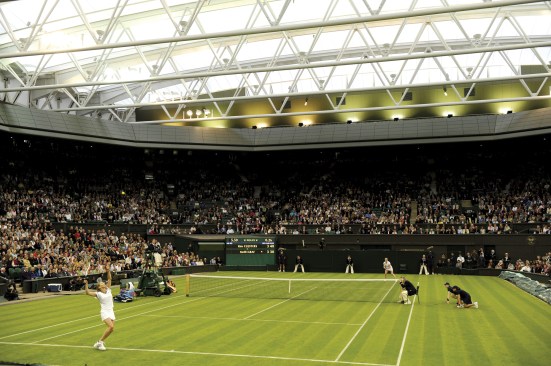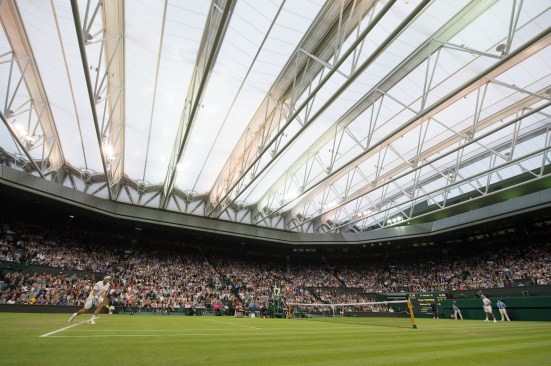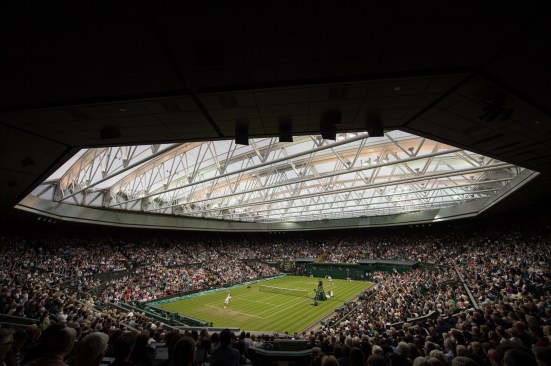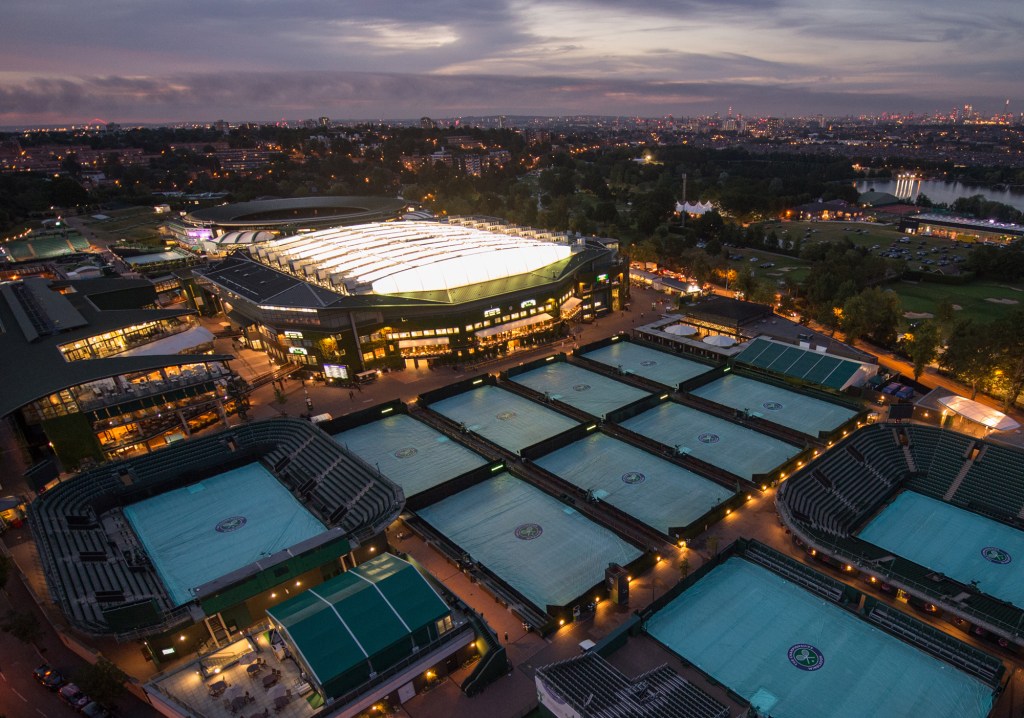Wimbledon’s Centre Court is arguably tennis’s greatest stage. In preparation for this year’s Championships, which are currently underway (July 3 – 16), The All England Lawn Tennis & Croquet Club (AELTC)—the tournament host and organizer—wanted to make sure that its premier court remained at the leading edge of world class sporting venues.
Any sport played outdoors is always subject to variable weather conditions. Tennis tournaments in particular have always had to contend with rain delays. For Wimbledon and the French Open, the second and third legs of tennis’s grand slam, (the Australian Open and the U.S. Open being the bookends to this quartet) there is also the added complexity of fading light, since there are no night matches played at these two tournaments. Often, rain delays have put entire tournament schedules in jeopardy of finishing on time, and so each of the Grand Slams has had to address the need for enclosing their stadiums to ensure that there will always be match play each day keeping players, fans, tournament officials, and broadcasters happy.

AELTC/Tom Lovelock
Steffi Graf (GER) during her exhibition match with Kim Clijsters (BEL) at the Centre Court roof inauguration event, A Centre Court Celebration, on May 17, 2009.
Wimbledon’s Centre Court donned its roof in 2009. The sports lighting technology at the time called for high-intensity discharge (HID) lamps. The court also had a lighting control system—Lutron’s GRAFIK 7000—with two main modes: Championship and non-Championship.
For the 2017 tournament, 186 LED luminaires replace the HID fixtures. Sports lighting specialist, U.S.-based Musco Lighting, did the work with ME Engineers in London; both were part of the original project team in 2009. Musco’s system features its Total Light Control for LED, which provides uniform illumination on the court without brightness or glare, even in overcast conditions, as well as meeting the demands of high-definition television broadcasting criteria, particularly the need for a flicker-free environment. According to Musco’s press release, the new lighting system “…was the culmination of more than two years of extensive research, planning, and testing to ensure the solution was custom engineered precisely to the needs at Center Court.”

AELTC/Thomas Lovelock
With proper password permissions, lighting for Centre Court can be controlled from within the stadium to provide the ideal competition environment. Here, a view of the match between Marcus Willis (GBR) and Roger Federer (SUI) during The Championships 2016.
With the new LED fixtures in place, the control system also had to be upgraded, and Lutron’s Quantum Total Light Management system using Quantum Vue facility management software now serves as the operating system. ME Engineers used the original GRAFIX XP dimming panels, upgraded the processors, and installed an improved graphical user interface. As the roof is closed only during inclement weather, one of the key requirements is that it can be closed as quickly as possible with the least amount of disruption to play. That carries through to the lighting system, which can be turned on immediately without the need for lamp warm-up time, as was the case with HID technology.

AELTC/Joe Toth
The lighting for Centre Court is easy to use and fail safe, whether the roof is open or closed. Here, a view of the match between Marcus Willis (GBR) and Roger Federer (SUI) during The Championships 2016.
One of the interesting features of the Centre Court lighting strategy is the use of indirect lighting. Some of the fixtures in the trusses aim at the roof panels and reflect light off the Tenara fabric of which they are constructed. This provides a diffuse layer of ambient light on the court, reducing the number of direct luminaires needed, and mitigates the possibility of direct fixture view for players and attendees alike. The same lighting and control system now used on Centre Court will be installed on the new No. 1 Court, which is scheduled to open in time for the 2019 tournament.
